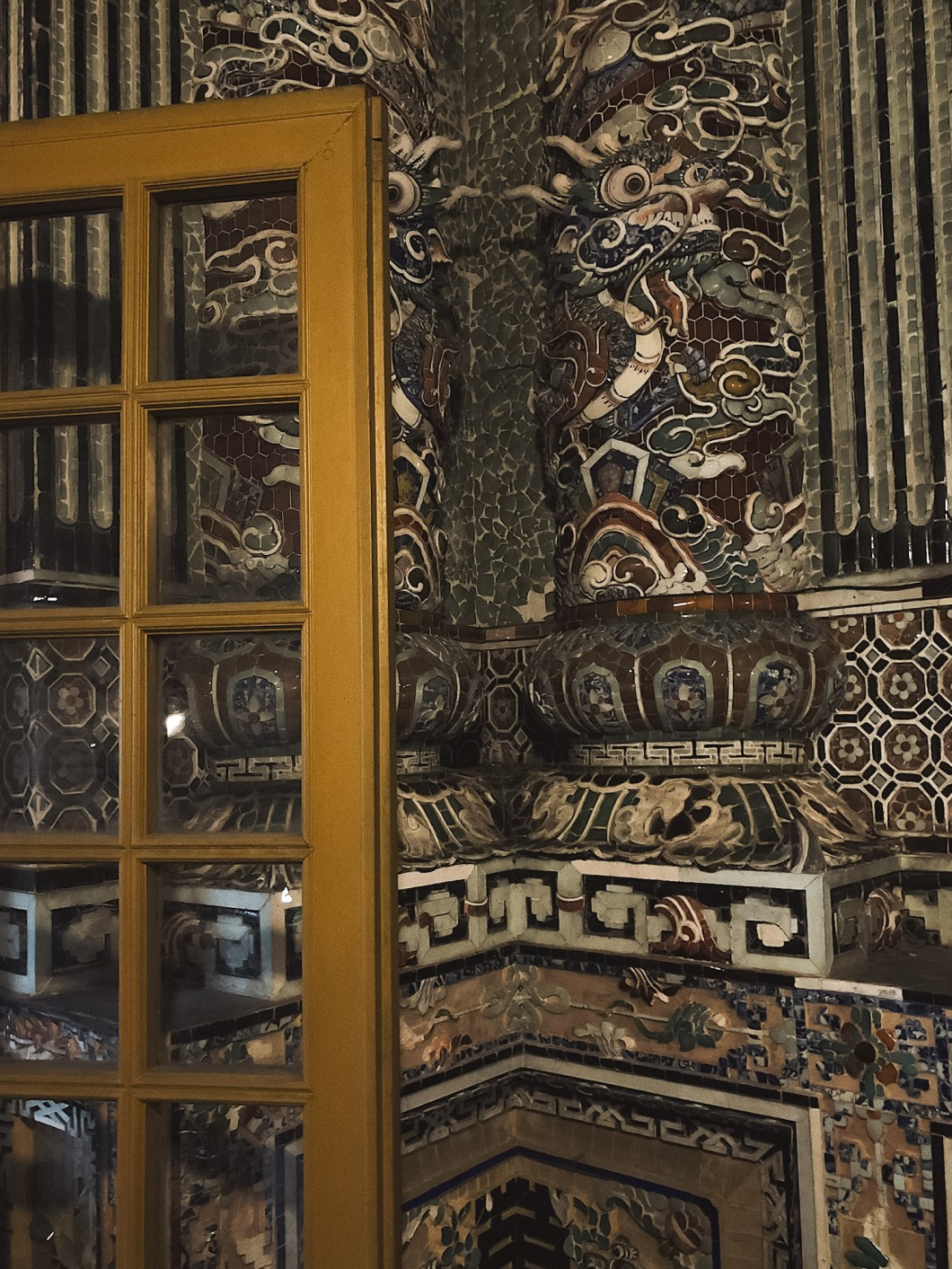Photos & Text: Phan Cac Truc
The whole world admires Japanese for the golden joinery art – Kintsugi – which turns broken pieces into arts, highlighting the cracks and repairs as simply an event in the life of an object. Little did anyone know that back then from early XI-XII century (during the Ly Dynasty from 1010 – 1225), Vietnamese craftsmen also collected broken porcelain pieces in the kiln to turn them into an architecture decoration. The service of beautiful porcelain would not come to end at the time of its damage or breakage. These craftsmen left an early heritage of embracing the flaws, the imperfection, and accepting change and fate as aspects of life.
![PSX_20180416_211031[1].jpg](https://panbanana.wordpress.com/wp-content/uploads/2018/06/psx_20180416_2110311.jpg?w=1060)
Indeed, this independent technique of Vietnamese ceramics and porcelain tradition is one of the most beautiful lost traditions of the world. Craftsmen in Ly Dynasty created an extraordinarily creative period that their works became famous all over the East Asian, even to the Middle East. After transferring the capital to Hue, the Nguyen Dynasty (1802-1945) had a renewed interest in ceramics and porcelain art with unique decorative motifs for the service of the court and royal life. Talented craftsmen who got skills in porcelain and ceramic joinery were chosen from different provinces over Vietnam and even given office promotion in the government department “Nề ngoã tượng cục”.
There are many styles of porcelain joinery which can be seen in different royal architectures: imperial citadel, monuments, and palace, and pagodas… One must visit Khai Dinh mausoleum – the epitome of Vietnamese joinery art, and UNESCO World Heritage if he wants to understand this Vietnamese porcelain and ceramic art, the art of emphasizing the imperfections and turning them into an artworks to contemplate.

Being known through era for his bon-vivant characteristic and wanderlust, no wonder why Khai Dinh had been travelling to many places, both foreign countries and local destinations. This explains his interest in various architectural styles of Vietnam, Gothic, Romanesque, India, Buddism, and so on, which could be seen clearly in his palaces, residences and especially his tomb. The 12th reigning emperor in Vietnamese history was also the very first ‘traveller’ who explored many new picturesque pristine nature of Vietnam such as Lang Co bay, which was recognized as one of 30 most beautiful bays in the world by the Club of the World’s Best Bays (Worldbays) in 2009. After ascending the throne on, Khai Dinh chose Lang Co bay to build up his summer palace Tinh Viem – Résidence d’Été de L’Empereur d’ Annam, and Chau Chu mountain to construct his “house after death” – the Ứng Mausoleum (Ứng Lăng). As the summer palace was totally destroyed due to the movement against feudalism, the mausoleum miraculously survived through war despite the fact that the king was very much loathed by his people due to his close collaboration with the French occupiers.
![PSX_20180410_223251[1]](https://panbanana.wordpress.com/wp-content/uploads/2018/06/psx_20180410_2232511.jpg?w=1060)